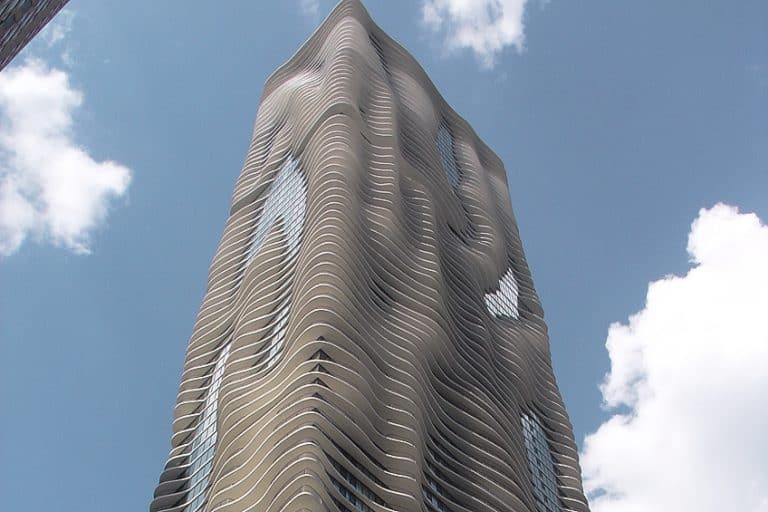Types of Architects – Exploring Architectural Specializations
The different types of architects are numerous and multifaceted, and we cannot possibly cover all the different kinds of architects in a single article. However, we will look at several of them today and cover the basics of what each of these different types of architects do, and some of the skills and understandings that may be necessary within each of these different types. So, let’s have a look at the different types of architects below and see what we can learn!
The Different Types of Architects
There are many different types of architects in the world, and they are all quite distinct from one another and require different understandings of the purposes of the structures that they design. We will look at several of these different kinds of architects below in alphabetical order to ensure that none are given preference over any of the others. Architecture is an immensely diverse and dynamic field, and this overview of the different types of architects may be beneficial to those who are looking into pursuing a possible career in architecture.
However, this discussion should be interesting for those who are also simply interested in architecture in general and would like to know a little more about it.
Commercial Architect
Commercial architects are some of the more important types of architects to the economy in general as they are focused on the design and implementation of a variety of commercial spaces. This means that they are integral to the design of office, retail, and hotel space, alongside other kinds of commercial structures.
Commercial architects need to understand the way in which commercial spaces need to be simultaneously aesthetically appealing to those who are forced to work within them, usable by those who frequent them, such as customers in retail spaces, and functional for all involved.
An important aspect of design is also an understanding of consumer and industrial psychology as they can be used to design structures that are desirable for those who work within these spaces. This particular type of architect is one of the most sought-after as commercial spaces are part of our constantly expanding world, and as an integral part of the economy, there tends to be demand for commercial spaces that are well designed.

While certain commercial spaces, such as grocery stores, are often far more functional, there is also significant space in this particular field within architecture for more artistic designs, especially in smaller stores and commercial areas.
Computational Architect
Computational architects are those who are far more incorporated in modern technological aspects of architectural design, and as such, they are often more focused on a programming-oriented approach to design. These types of architects are those who make use of advanced computer technology and simulations to design structures the likes of which could often not be designed otherwise.
The kinds of designs that are far more common in this particular field include parametric and generative designs that may make use of technology such as 3D printing or AI-assisted design.
This can mean computational architects are often on the cutting edge and can aid in the design of structures that may not otherwise be possible, such as architectural styles like blobitecture, which often requires the use of computer simulation to ensure that said structures will not collapse.

However, those who wish to pursue a career in this particular type of architecture will likely not be those who are particularly interested in more traditional means of designing structures. The way many different careers are moving, it would be beneficial to be familiar with design technology such as this as it has become increasingly necessary for architects to understand and make use of the kinds of technology that computational architects make use of (and/or develop) on a daily basis.
Educational Architect
Educational architects are, quite simply, those who are engaged in the design of educational settings. This can mean the design of schools and universities, and as such, there tends to be a large swath of different architectural aspects that need to be designed in structures of this variety. There often need to be spaces for learning, spaces for administrative purposes, offices, and, depending on the kind of educational facility, residential facilities for students and perhaps faculty too.
This can often mean working alongside educational professionals to ensure that spaces are best optimized for learning.
This can mean having to design classrooms and lecture halls in such a way that they incorporate correct levels of light, comfort, space, and any other potentially necessary aspects. There is also a diverse range of learning methods and needs that may need to be catered for. Different educational systems may make use of different kinds of structures for different purposes, but there are also some that cater to various needs.

A school that is focused on, for instance, a Montessori school may be further focused on larger spaces or outdoor means of learning and recreation while a more traditional schooling system may entail the use of more formalized classroom structures. And when it comes to schools that are termed under the general label of “special needs” schools, they will each have their own specific requirements.
For instance, a school that is focused on developmental difficulties will be vastly different from a school that focuses on hard-of-hearing and deaf students.
In addition to this, educational facilities are typically spaces in which students, who are generally young, spend a significant amount of time. And so there generally needs to be a balance of some kind between this dedication to functionality as well as a need for the use of recreational amenities and aesthetics. No one wants to learn in a boring block design, but that is how most students are forced to learn, and contemporary educational architects may focus on ways to improve the appearance and enjoyability of spaces geared towards learning.
Exhibition and Museum Architect
Of the many different types of architects, those who are focused on the development and implementation of exhibition and museum spaces are those who go by this particular moniker. These architects are those who are expected to design spaces that best exhibit and showcase what a museum or exhibition wishes to exhibit.
For this reason, architects in this vein are expected to understand the best way in which to present an immersive and interactive experience for those who attend exhibits and museums.
While many of these kinds of structures are often conversions of other buildings, such as the Louvre in Paris originally serving as a palace, this is not always the case. However, what is generally expected is for these kinds of structures to be larger and more filled with light than many other structures. However, there are a variety of issues that may face an exhibition or museum architect, such as the need to also preserve the items that are on display.

Natural light can have devastating long-term effects on paintings and other artifacts, and these kinds of spaces also usually need to have improved means of climate control within them. An art museum that is too humid can lead to eventual damage to the artworks found within. Additionally, security also needs to be taken into account to safeguard the items found within the walls of these institutions.
This means that there is an inherent need to understand certain aspects of functionality over aesthetics for these types of architects, but there is also a need to understand how best to lay out and design these spaces to allow for superior exhibitions.
For instance, spaces in museums are usually oriented around certain themes or eras, and so there may be a desire to incorporate a certain aspect of architectural storytelling to aid the visitor in better experiencing what they are perusing. However, this is an immensely rewarding field for anyone interested in becoming an architect.
Healthcare Architect
A healthcare architect is exactly what it appears to be. Most different types of architects are focused on the design and implementation of spaces that are important for humans improving their quality of life in a more standard sense, but healthcare architects are those who are focused on the design of medical centers. This can involve a variety of structures, such as hospitals, clinics, rehabilitation centers, and much more.
Hospitals are generally not noted for their beauty, and there’s a reason for that.
In a similar sense to industrial architects, the idea behind a healthcare architect is that they need to design buildings that serve an extremely important functional purpose. They are not focused on lavish architectural flourishes or innovative means of material usage and load-bearing wall design. Instead, they are focused on the best way to provide medical care and attention to those within their walls.

This can be through some fairly basic means, such as by designing hospitals around a highly segmented approach to allow for easier isolation and quarantine when needed, the integration of plumbing throughout a structure to ensure that there are more bathrooms than ordinary for a building of its size as well as the use of far more basins than would ever be seen as necessary in any other structure, and the use of a mix of residential and office space within a single structure with no breaks between zones.
There needs to be a place for patients and there needs to be a place for nurses and doctors. Storage is important and needed for quick retrieval of medication, and a medical space also needs to be designed in such a way that there is ease in cleaning (such as by reducing the number of unnecessary architectural flourishes).

Healthcare architects often collaborate directly with medical professionals because architects, regardless of the different kinds of architects and where they specialize, are not medical professionals and they do not know what is most important for the patients in a medical setting. New technologies in healthcare are constantly being developed, and it becomes important for healthcare structures to be well-designed and preferably secure against possible issues, such as power outages or disasters.
There are many ways for healthcare architects to help make this happen.
Industrial Architect
Industrial architects are likely some of the most important architects to large sectors of the economy as they are the designers who are in charge of the design of industrial facilities, such as factories, warehouses, and power plants. There are many different structures that can be called part of industrial architecture, but they are all generally constructed around a function over form style.
Many different types of architects are focused on structures that are, in some way, attempting to be both functional and aesthetically pleasing, but this is not the case with industrial buildings.
These structures often entail the use of exposed structural elements without beautification, such as cables being outside walls and walls being unpainted. Essentially, only what is necessary is done at all. For this reason, industrial architects are far more focused on designing efficient structures that have many safety procedures in place while adhering to regulations.

They need to have sufficient exits, space for emergency workers to operate if the need arises, sufficient ventilation for workers who may spend hours at a time in tight confines, and so on.
In the contemporary era, industrial architects are also often expected to understand and know the latest technology that can be used and implemented in industrial structures. This can mean the use of automated processes, such as robotics-oriented conveyer belts and other advances in industrial technology.
Interior Designer
Interior designers are sometimes not seen as quite the same as some other types of architects because they do not often have a hand in the actual design of structures. However, interior designs do form part of architecture as a whole even when they are not directly incorporated into design because their function is to enhance interior spaces within a structure.
The enhancement of interior spaces does not necessarily mean that interior decorators are there to beautify a space, but this is often part of their job.
They are also expected to understand the best means to implement cohesive spaces that are both functional and aesthetic. They exist to better design interior spaces to ensure that they are as usable and aesthetic as possible.
Many interior designers work with already existing structures and are expected to design the interior in such a way that it can be improved from its present state, which can be as simple as furniture placement or as sophisticated as tearing down or adding walls.

However, some interior designers do also work with other architects to ensure that a space does not need additional work after the fact, and some of the biggest projects will always entail the use of interior designers too because it is in the interior of a structure where people spend most of their time with a building.
It should probably be a pleasant space to traverse because of that.
Landscape Architect
Landscape architects are, quite simply, those who work with outdoor and natural spaces. The purpose of the landscape architect is often to design spaces such as gardens, parks, and other outdoor recreational locations. For this reason, they are often expected to understand certain aspects of design that may not be expected of some other types of architects.
For instance, landscape architects are often expected to have an understanding of fields such as horticulture and botany.
They are expected to understand local plants versus exotic plants, the best means to arranging outdoor spaces for both aesthetic and functional purposes, and they are also, especially in the present day, expected to understand sustainable and ecological design.

The environment is something that needs to be maintained, and the job of the landscape architect is to determine the best way in which one can arrange outdoor spaces so that they are as accessible to humans as they are sustainable for the environment around them.
For this reason, landscape architects also often work closely with other types of architects to ensure that the spaces around buildings are as aesthetically pleasing as possible while also being as sustainable as possible.
Residential Architect
The residential architect is perhaps the type of architect that we most associate with the buildings around us as they are the ones who design residential spaces. This can mean designing houses, apartments, and so on. To be a residential architect, one generally needs an understanding of the functionality inherent in a home space, the desire for a specific aesthetic, and an ability to adhere to the requirements of a client.
However, there are challenges involved in this particular form of architecture as the budget is often far lower and more constrained than it would be with larger and more elaborate structures, and this can lead to a need to understand how best to use as little money as possible.
Residential architects also design homes, and while many residential architects are hired to design complexes full of houses, in which case individual design tends to be less important, one of these types of architects can also be hired on a more individualized basis.

Whether residential architects design on an individual or larger scale, there tends to be a lot of work for this kind of architect. Everyone needs a home, after all, and many are willing to pay for aesthetically pleasing homes. This is a rewarding field in architecture and one of the most prominent.
Restoration Architect
Restoration architects are those who are focused on the preservation of existing structures that hold some kind of a historical or cultural value. For this reason, restoration architects are a type of architect that does not actually focus on the design of new buildings but rather the preservation of existing ones.
For this reason, restoration architects need to have an understanding of far older materials and how to deal with structures that are aging in some or another sense.
This can entail the use of newer materials to aid the original structure and stop it from collapsing, but this generally has to be done without affecting the structure beneath it. When we preserve buildings, we want them to look the same as they used to look rather than looking like something entirely new.

In addition to this, restoration architects often need to be focused on understanding modern functionality as well as an understanding of safety standards that can best preserve the structure, such as through a reduced use of light or something similar. For instance, certain structures have needed to be sealed to preserve their interiors for future generations, but that is the kind of drastic solution that is not preferable as it means the building cannot easily be entered.
It’s this difficulty that restoration architects need to navigate.
Sports and Entertainment Architect
There are many different aspects of life that humans enjoy, and sporting/entertainment venues are often necessary for much of what humans enjoy doing in their free time. We all wish to be entertained in some or another way, and for this reason, sports and entertainment architects are some of the different kinds of architects who are focused on designing structures that can often cater to massive groups of people for large-scale entertainment events.
For this reason, they design structures such as sports stadiums and arenas, and other entertainment venues, such as theaters and performing arts houses.
When it comes to the design of a structure such as this, it is important to keep in mind a variety of elements. One of the most important of these elements is that buildings of this variety are often occupied by more people than practically every other kind of building. There are stadiums that can accommodate thousands of people whereas most residential skyscrapers likely accommodate a few hundred in comparison. This means that crowd control and safety become immensely important parts of the design for these types of architects.

There needs to be sufficient bathroom and kiosk space for potentially thousands of people, a large array of exits that are easily reachable by everyone in a facility such as this, and an efficient means of processing visitors so that they can reach their seats with relative ease. This can entail the use of many different paths to reach seats or numerous entrances and other potential methods.
However, all of this is only the health and safety component of these kinds of venues, and sports and entertainment architects also need to take the spectator experience into account.
It is necessary for those who design these kinds of structures to understand the best way to ensure that as many people as possible attain a good experience while visiting said facilities. If views are obstructed or if the weather causes discomfort for those who are in attendance, then that will be an issue for all involved. For this reason, these types of architects need to understand the way in which people want to be situated and how to best cater to as many visitors as possible. This is a challenging if rewarding potential career in architecture.
Sustainable Architect
Sustainable architects are some of the more contemporary types of architects because they are focused on the use of eco-friendly and sustainable design. This can mean that sustainable architects design their own structures, but they often work alongside other architects who may have a more traditional understanding of architecture and may not know or understand some of the sustainability technology that has been developed in recent years.
Sustainable architects are those who are expected to understand which kinds of materials can be replaced with more sustainable forms or how to incorporate eco-friendly solutions into structures.
This can involve the use of entirely different materials, but it can also entail the use of sophisticated ventilation or window design for climate control within a structure. Furthermore, these types of architects are usually focused on the latest in sustainable architecture and design as the field is constantly growing and expanding. The use of renewable energy sources, gray water systems, specific placement of materials to reduce heat buildup, and so on, are only some of the areas that a sustainable architect will be expected to understand.

However, for those who are interested in a career in architecture, sustainable architects are some of the most important and sought-after in recent decades as all structures tend to aim for sustainable design these days (or at least this is the case with large projects).
There is a need to aid the climate we live within, and sustainable architects are contributing to that reality.
Urban Planner
Urban planners are one of the many different types of architects that one could pursue if one were to wish for such a career, but on a larger and more societal scale than on a singular structure. The reason for this is because the basic premise behind an urban planner is that they are the ones who attempt to determine ways to better improve and manage city environments. A major component of an urban planner’s job is to serve as a problem solver.
Many different kinds of architects require problem-solving abilities, such as determining the best way to lay out a certain kind of structure, but in a similar capacity to restoration architects, urban planners need to operate within the bounds of an already existing space.
While the urban landscape is continually expanding and so there are possibilities of some urban environments being entirely new and therefore designed by urban planners from the ground up, in the contemporary era, it’s far more likely to be a position that entails trying to improve rather than create urban spaces. Urban planners, for this reason, need to focus on aspects of design that focus around the issues that are currently present in our transportation and infrastructure systems.

Urban environments are fundamentally public spaces, and so urban planners need to, for instance, determine ways in which pedestrian regions and vehicular roadways can be better integrated to lead to a better overall space for all. This could be through something as simple as improved sidewalk design or bridges for crossing motorways without the need to slow down vehicle traffic to more sophisticated methods that involve psychological tricks, such as the use of specific paint and signage to reduce the speed of cars on the roads to make them safer for pedestrians.
Urban planners are also often meant to aid in the allocation of other architectural professions, such as where best to deploy landscape architects to aid in designing cityscapes around green zones to improve the general quality of life for those who live within cities.

Cities are a part of our world, and there are many different types of architects that can aid in changing and altering them. Changes can occur on an individual structure level, such as through skyscrapers in cities incorporating public plazas into their design (which can be incentivized through the work of urban planners), or on a larger scale, such as with the adoption of new zoning requirements, infrastructure designs, and so on. All of these aspects would be in the purview of the urban planner.
With that final entry, we have come to the end of our look at the different types of architects. We have examined a number of different potential fields in architecture for those who are interested. The entire field of architecture is a massive and diverse one, and there is space for a vast array of different individuals with a variety of interests. So, if you are interested, maybe one of these types of architects will be of interest to you!
Frequently Asked Questions
What Is an Architect?
An architect is an immensely broad term that, in general, refers to someone who designs structures. There are a great many different types of architects, but in a more generalized sense, they are figures who need to hold a number of different talents. They need to have creative ability as well as technical knowledge with regard to structural elements that are needed in the design of buildings.
How Many Types of Architects Are There?
One cannot answer a question like this because there is no real definitive number of different types of architects. Some of the most common are residential architects, commercial architects, and industrial architects. However, there are many different types in addition to these. Each of the different kinds of architects is focused on different types of buildings for vastly different functions. For this reason, a term like architect is often far too vague to encompass the full architectural field.
What Qualifications Are Required to Become an Architect in Different Specializations?
Different architects are expected to have different kinds of qualifications. It is generally expected for an architect to attain, at the least, a bachelor’s degree in architecture. However, different types of architects require different types of skills. For instance, a landscape architect may also be expected to have some working knowledge of horticulture that a residential architect may not be expected to possess.
How Does Each Type of Architect Contribute to the Overall Building Design Process?
Sometimes an architect will work entirely alone, as is the case with residential architects on many of the projects they design, but this is not necessarily the case with larger designs. For instance, a large structure may need an urban planner to aid in how best to align a structure with an urban environment, while the commercial architect may design the structure itself alongside a computational architect if more sophisticated designs are needed, and that may all be topped off with a landscape architect who will design the gardens. All the different types of architects have their own skills that can be brought together to construct a building.
Are There Any Architectural Specializations That Combine Multiple Types?
Many different kinds of architects require an understanding of different types. For instance, an architect focused on environmental design may need an understanding of both residential and landscape architecture to better facilitate their designs. The idea that any specialization is entirely independent and has nothing to learn from other specializations is typically a more arrogant way of thinking; everyone can learn from everyone, after all.
Justin van Huyssteen is a freelance writer, novelist, and academic originally from Cape Town, South Africa. At present, he has a bachelor’s degree in English and literary theory and an honor’s degree in literary theory. He is currently working towards his master’s degree in literary theory with a focus on animal studies, critical theory, and semiotics within literature. As a novelist and freelancer, he often writes under the pen name L.C. Lupus.
Justin’s preferred literary movements include modern and postmodern literature with literary fiction and genre fiction like sci-fi, post-apocalyptic, and horror being of particular interest. His academia extends to his interest in prose and narratology. He enjoys analyzing a variety of mediums through a literary lens, such as graphic novels, film, and video games.
Justin is working for artincontext.org as an author and content writer since 2022. He is responsible for all blog posts about architecture, literature and poetry.
Learn more about Justin van Huyssteen and the Art in Context Team.
Cite this Article
Justin, van Huyssteen, “Types of Architects – Exploring Architectural Specializations.” Art in Context. August 18, 2023. URL: https://artincontext.org/types-of-architects/
van Huyssteen, J. (2023, 18 August). Types of Architects – Exploring Architectural Specializations. Art in Context. https://artincontext.org/types-of-architects/
van Huyssteen, Justin. “Types of Architects – Exploring Architectural Specializations.” Art in Context, August 18, 2023. https://artincontext.org/types-of-architects/.









